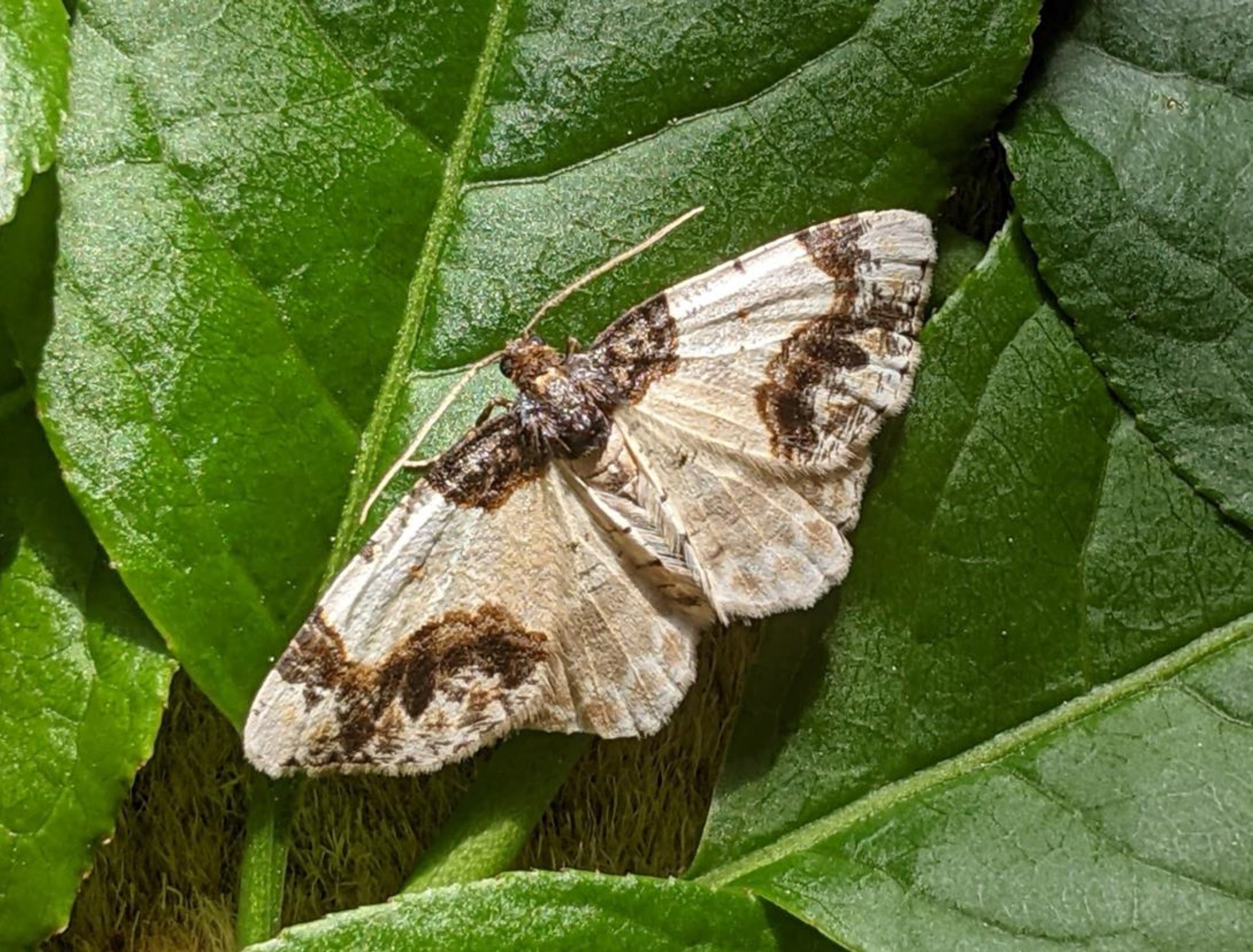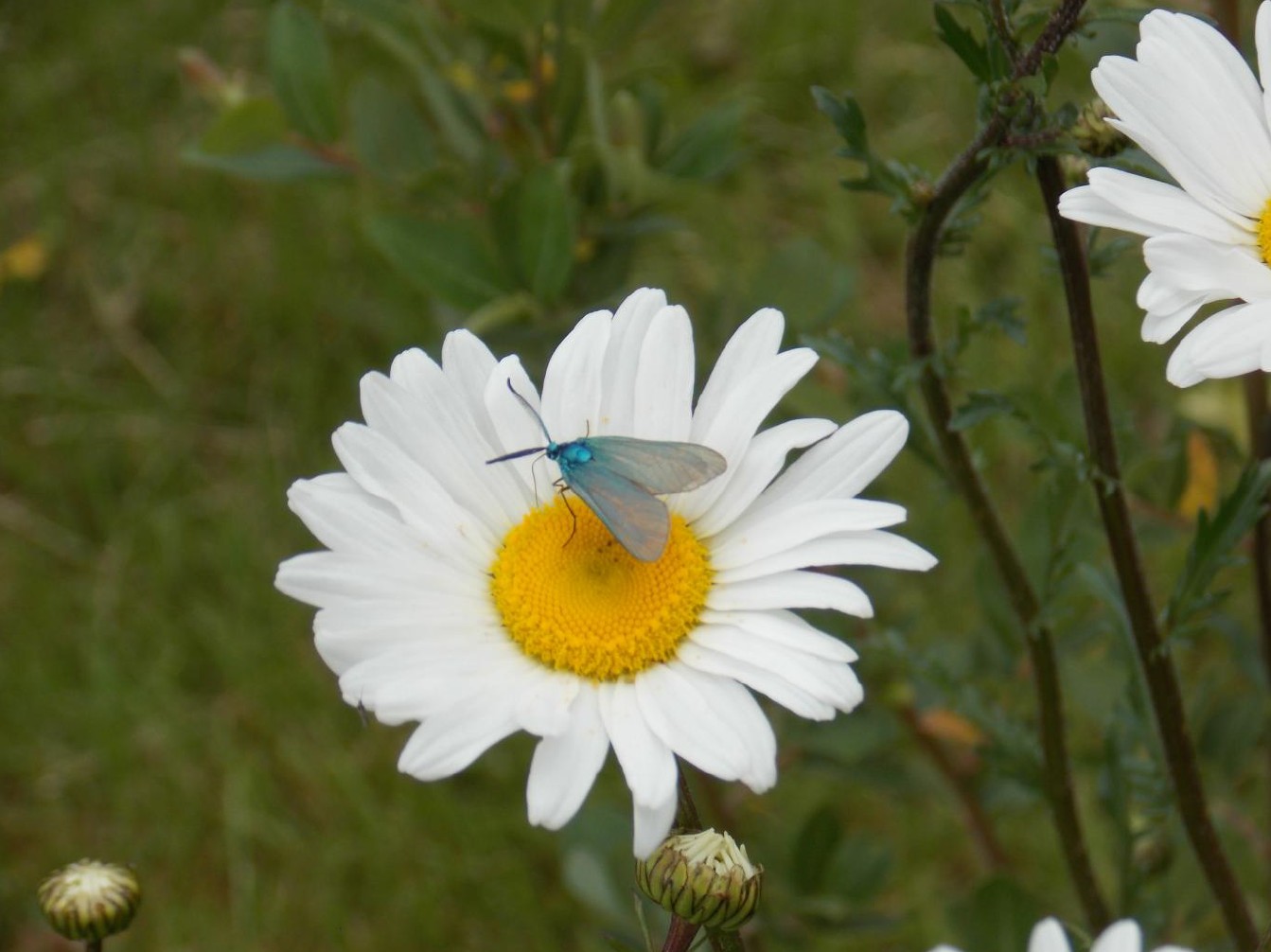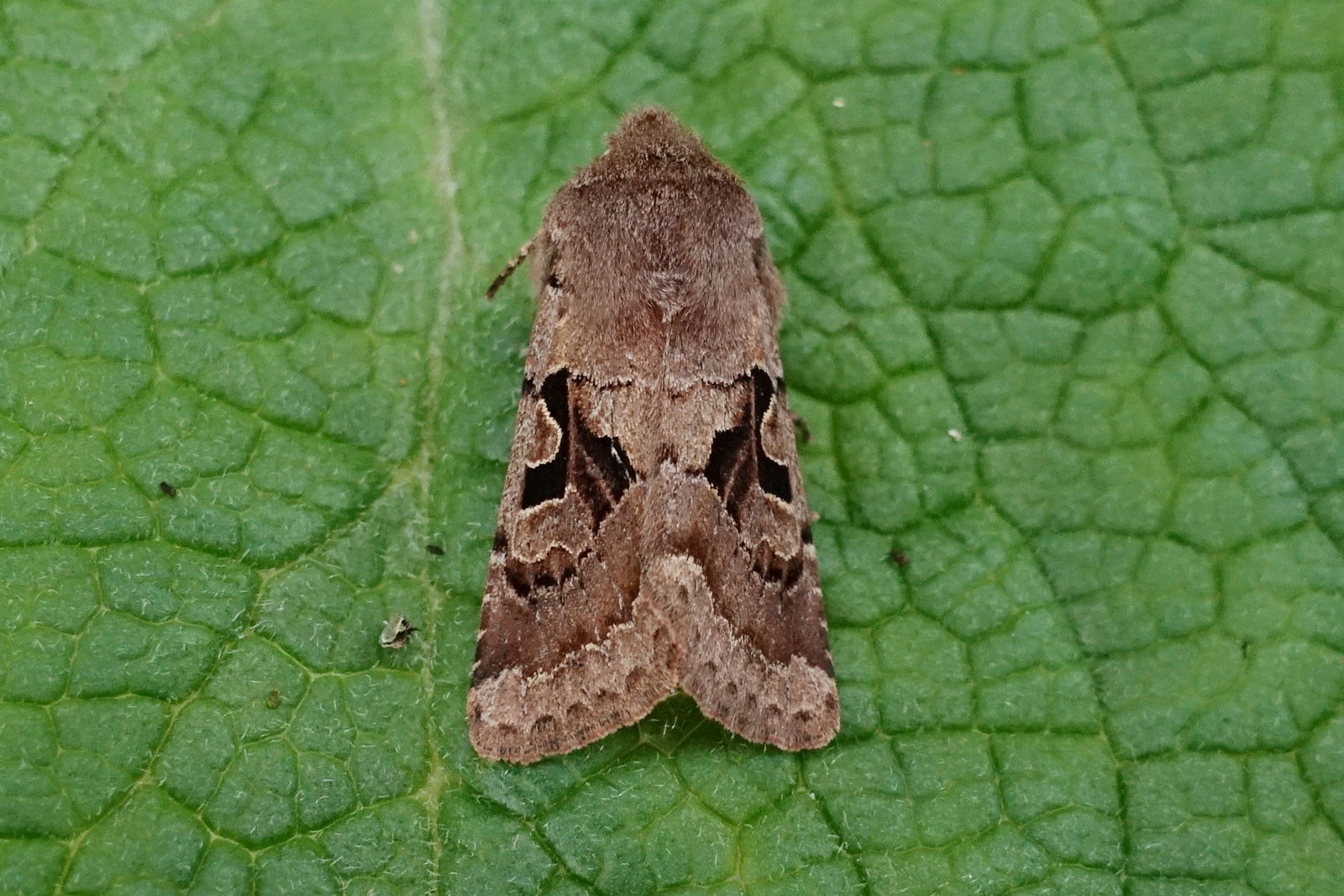2024 has got off to an interesting start with Peter Norman spotting this Scorched Carpet in his actinic light trap at Carrick Shore south of Gatehouse of Fleet on the eighth of May. This geometrid moth is about the same size as the common Clouded Border but has distinct, dark markings on its forewings which make it unmistakable. The patchy reddish brown on the hind wings and on the underside of all four wings, gives this moth the ‘scorched’ appearance.
This is the first time this moth has definitely been found in Scotland although there are some old records including two from D&G in the 1860’s. This is one of the species which are thought might appear on our side of the Border eventually but it is unlike others on the list because it is not particularly known to be expanding northwards. It is, however, currently found in south Cumbria and in Yorkshire but the UK distribution map shows that it is only widespread in southern England and becomes rapidly more scattered in northern England and Wales.
The obvious explanation of this distribution is because this moth is dependent on a single food-plant – Spindle. This is a native tree which naturally occurs in limestone rich areas but is frequently planted in ‘wildlife friendly’ hedgerows and woods where it can grow to over six metres and live for more than a hundred years. It has simple, oval, finely toothed glossy leaves but is best known for its pinky-red, lobed fruits in autumn when its leaves also turn red. In Scotland, Spindle is thinly scattered, mainly in the east but is does grow in places along the coast of D&G and to the east of Dumfries.
The Scorched Carpet’s caterpillar is a classic ‘looper’ and when fully grown is dark green with a brownish ‘flattened’ head, three small, paired, white marks, normally with a black spot between, them halfway along its back and a characteristic large brown mark on either side below them. It feeds at night and does sometimes hang on a silken thread below the leaves. It eventually pupates on the ground at the base of the tree. Obviously, we cannot know exactly how this moth behaves in Scotland but it is known to be double-brooded elsewhere emerging in April to June and again in July to September. The adults, particularly the males, come to light.
The question is does this species actually live in D&G? With only one record it is impossible to know but it is conceivable that due to the extreme rarity of its foodplant it has never turned up before at a suitable light trap. The very old records were from Dumfries and could easily have been from Spindles planted in gardens. In Yorkshire, where Spindle is similarly scattered, it has been noted that records for this species have been increasing even though its distribution has remained the same. Could it be that conditions are becoming more suitable for this particular species or is this just a stray?
Obviously, if we can find more examples we will be able to speculate with a greater degree of accuracy. Moth trapping near any concentrations of Spindle could be valuable as would looking for the caterpillars and their signs of feeding. This would probably be most effective by searching for the active larvae at night with a suitable torch.




